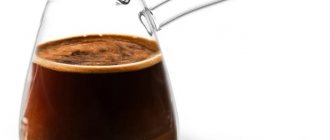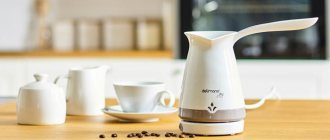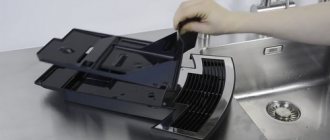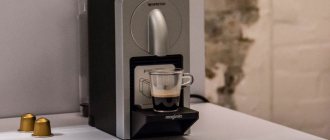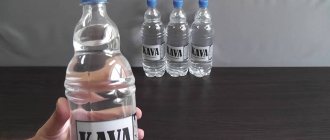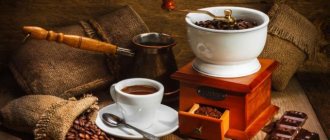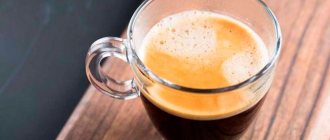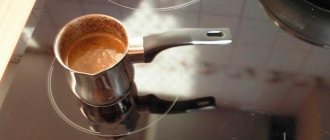Using dirty dishes is unhygienic and sometimes life-threatening. Microbes that can cause infection or intoxication can live on the surface and inside the Turks. Some housewives are afraid of damaging the coating of the dishes, so they prefer not to use products. In fact, cleaning a copper Turk is not difficult, you just need to choose the right method.
How to clean the outside of a copper pot?
The following means can restore the product to its original appearance:
- lemon acid;
- vinegar and salt;
- milk serum;
- vinegar dough;
- brine;
- ammonia.
Additionally, for dry cleaning at home, use tooth powder, soda, talc with sawdust, etc.
Lemon acid
In the case of it, you can clean the Turk in 3 ways:
- Rub the surface with lemon. Half of the fruit is processed on the outer part of the turk. To enhance the effect, you can use, for example, soda. The powder is applied to the cut, after which it is rubbed onto the copper surface. If there are convex and concave areas, you can use a soft brush.
- Using citric acid. First prepare a solution: 2 tsp. powder is diluted in 250 ml of water. The liquid is applied to the outer walls with a soft sponge. The product is left on the surface for 2-3 minutes.
- Using a mixture with abrasive particles. A paste is prepared from lemon pulp and soda or tooth powder. The entire surface is treated with a soft sponge. The mixture is lightly rubbed to remove impurities.
After the procedure, the Turk is washed with warm water. The surface is rubbed with a soft cloth to enhance shine.
Vinegar and salt
They are used in extreme cases. Only small particles are suitable for cleaning: large ones will scratch the surface. The mixture is used for severe contamination or complex shapes.
The cleanser is prepared from 2 tbsp. l. vinegar and 1 tbsp. l. fine salt. The mass is applied to the surface with a soft sponge. The raised areas are wiped with a brush, trying not to put strong pressure on it. At the end, the remaining mixture is removed with warm water.
If dark burnt spots appear on the surface of the Turk, you can boil it in an acid solution. To prepare it, take 250 ml of vinegar and 1 tbsp. l. salt. The Turk is kept in the hot mixture for 20-30 minutes, then the dishes are thoroughly washed and wiped with a soft cloth.
Milk serum
It is relatively gentle and does not leave marks on the surface, but this method will only help with minor stains.
The liquid is slightly heated until it becomes warm. The Turk is immersed in it so that all elements come into contact with the serum. After half an hour, the raised parts and areas with dirt are wiped with a brush or sponge. At the end, the Turk is washed with water and traces of moisture are removed.
To enhance the effect, for every 250 ml of serum you can add 1 tbsp. l. salt. The crystals should be small. They are completely dissolved in warm liquid.
Vinegar dough
The vinegar test method is used when there are a large number of relief parts. The product allows you to remove dirt even from hard-to-reach places.
The dough is prepared from a vinegar solution. For 250 ml of liquid take 1 tbsp. l. salt. The concentration of acetic acid should be 6-8%. Flour is gradually added to the solution. The result is a semi-liquid consistency, reminiscent of gruel. On average, this serving takes 2 tbsp. l. flour.
The paste is applied to problem areas or the entire turk. The mixture is allowed to dry. After 40-60 minutes, the paste is removed with a dry toothbrush. After this, the dishes are rinsed with water and wiped dry.
Brine
You can clean the Turk using brine. Any will do: tomato, cucumber, cabbage, etc. If necessary, you can prepare the solution yourself. To do this, add 1 tbsp to a glass of warm water. l. salt without a slide.
Turka is completely immersed in brine for 20-30 minutes. An alternative option is to use flannel cloth soaked in the solution. Then, if necessary, the problem areas are wiped with a brush. The solution is washed off with soap and water, and any remaining moisture is removed.
Ammonia
There are 3 ways to clean Turks using ammonia:
- Using a solution. Alcohol is diluted with water in a ratio of 1:2. A soft cloth is soaked in it. They rub the Turk with it, then wash it with soap and water. This method only helps with light stains.
- Using a concentrated substance. Alcohol is mixed with water in a 1:1 ratio. The Turk is completely immersed in the solution. The dishes are left in it for 10-20 minutes. The mixture is washed off with a weak soap solution, then with water.
- With chalk mixture. Alcohol is mixed with water in a ratio of 1:2. Crushed chalk is added to the resulting liquid. For every 100 ml of solution take 0.5 tbsp. l. powder. To check the reaction, cleaning begins with a small area. If there is no damage, use a sponge with the mixture to treat the entire surface. The remaining product is washed off with soapy water.
Wear gloves when working with ammonia. Close contact with the substance is avoided. During the cleaning process, it is necessary to ventilate the room.
Dry cleaning
It involves the use of abrasive particles, which are more effective and allow you to get rid of even burnt coffee, but can damage the surface. To avoid damage to the dishes, it is recommended to use soft abrasives and start processing from small areas. This will allow you to check the reaction.
The following can be used as soft abrasives:
- finely ground salt;
- sawdust;
- flour;
- soda;
- dentifrice;
- talc;
- crushed chalk.
Salt is used with caution, as large crystals can damage the surface. To clean, abrasive particles are applied to a damp soft cloth or a paste is prepared with vinegar solution, citric acid and other cleaning agents. Treat the surface with a cloth or sponge, lightly rubbing the mixture into it. Then the remaining abrasive is washed off and the turk is dried.
Household chemicals
If desired, cleaning products for copper surfaces can be found in stores. The modern chemical industry presents many special products that should be applied to the outer surface of the Turk, rubbed and washed off. After this, the Turk will shine like new. Among other products, “Bagi Metal Cleaner” and “Reynex” should be highlighted. How to apply them correctly on the product is described in detail in the instructions. It is important to know that when using chemicals, you need to use personal protective equipment.
How to clean a burnt Turk inside?
It is more difficult to clean the inside of the Turk due to its narrow neck. For this reason, boiling is used to remove contaminants.
Fill the bowl with warm water and pour 2 tsp inside. soda The powder is dissolved in the liquid. The Turk is placed on the fire and allowed to boil, then kept on the fire for another 2-3 minutes. After this, the plaque easily dissolves. If necessary, you can additionally treat the inner surface of the container with a brush.
If the Turk is very dirty, you will need a pan and a soap solution. To enhance the effect, you can add a little vinegar or citric acid. The liquid is heated in a saucepan, then the Turk is immersed in the mixture. After boiling, the entire structure is kept on low heat for 30-40 minutes. Then the Turka is taken out of the liquid and cleaned with a brush or brush.
Choose wisely
Turka or cezve is a special vessel in which you can prepare natural aromatic coffee. Its peculiarity is a wide bottom and a narrow neck. This shape helps preserve the aroma of the coffee beans, and the thicker contents settle to the bottom faster.
Professionals recommend buying cookware made of copper, as it ensures uniform heating of the liquid and complete extraction of coffee oils.
Additional selection criteria:
- the diameter of the neck is 2-3 times smaller than the bottom;
- wall thickness – 1.5 mm;
- the handle is long, located at an angle;
- volume - 100-150 ml.
Find out more in the article “How to choose the right copper Turk”.
Basic Precautions
It is not recommended to use abrasive particles to clean the internal surface. The latter is less resistant to damage. Scratches and cracks on the inner walls often become places for bacteria to accumulate. Natural dyes easily penetrate into such areas, which aggravates the problem.
The use of steel wool and abrasive sponges should be avoided. They are capable of leaving scratches on the surface of the Turk.
To prevent the appearance of plaque, it is not recommended to boil dishes until dry. Plastic and wooden spoons should be used to prepare coffee. Metal cutlery damages copper. Turkey cannot be washed in the dishwasher.
Features of the material
Copper utensils are often used in households. But such dishes require special care. Do not use hard brushes or other abrasive materials for cleaning. To extend the service life, polish as often as possible. Do not wash a hot Turk with cold water. After making coffee, it should cool down.
We hope that our tips and recommendations helped you clean the copper pot, and at the same time all objects made of this metal. Enjoy the taste of coffee and don’t forget about the rules of caring for your coffee pot!
How to care for copper cookware?
The following recommendations will help slow down the wear of copper cookware:
- Do not expose metal to sudden temperature changes. After preparing the drink, wash the dishes in warm water.
- For long-term storage, wrap the Turk in a thin soft cloth or newspaper.
- Do not allow copper to come into contact with other materials. This metal is soft, so other cookware may damage its surface.
- Do not store any food or substances in the Turk. This will speed up the oxidation processes.
- To add shine, polish the Turk from the inside with toothpaste without abrasive particles, and from the outside with dry newspaper or a soft cloth.
- Wash dishes immediately after use. This will prevent dry coffee particles from damaging the Turk and causing plaque to form.
- Store copper cookware in a dry place with good ventilation.
Do not use aggressive chemicals to clean surfaces. Contact of copper with hydrochloric and oxalic acids is unacceptable. If the bottom is very dirty, you can use soda or crushed chalk.
What not to use
We found out how to clean a copper Turk outside and inside. Now let's talk about what you should not use to clean copper.
It is prohibited to use hydrochloric and sulfuric acid. When reacting with oxygen and acids, copper begins to dissolve. Therefore, avoid products that contain these components.
Interesting! How many spoons of coffee should I put in a Turk?
When using the dry cleaning method, do not use powders that contain large abrasive particles. They scratch the surface of the Turks.
Dried puree, jam, burnt caramel and chocolate
A hard-to-remove crust almost always forms when cooking caramel, jam, or puree. It is problematic to clean it the first time, so it is recommended to proceed in several stages. Initially, the container where the jam or compote was prepared is soaked and left for 2-3 hours. Remove loose burnt flakes with a wooden spatula, without applying excessive pressure to the surface.
To clean pans after making jam, it is better to use citric acid.
Citric acid can deal with difficult-to-remove residues (the method is not suitable for enameled products):
- Water is poured into the bottom (the protrusion line should be slightly higher than the soot line), citric acid is added, which is taken at the rate of: a liter of water - a teaspoon of granules;
- Cover the container with a lid and bring to a boil. Leave on fire for at least 8-10 minutes.
The remnants of jam stuck to the bottom in an enamel container are dealt with using a water-soda mixture. The method is fast and does not require long waiting times. Half a glass of soda is poured with a liter of water. The dishes are placed on the fire and brought to a boil. As a result, the composition loosens the sweet and sour crust and peels it off.
Cooking sugar syrup to make caramel is always a complex, painstaking process. The sugar-water mixture may stick without constant stirring. Burnt sugar forms a dense crystalline layer that cannot be removed quickly. The burnt part should be immediately filled with hot water with the addition of 2-3 tablespoons of soda.
Instead of soda, you can clean the pan from burning with salt - it also copes with any type of soot.
Apple peel, due to the acid it contains, helps break down fructose and sugar particles.
One effective home remedy for cleaning pots is apple peel.
Chalk
How to save a Turk? Many consumers say: “I clean the cezve every time after making coffee, but I can’t achieve the desired effect. It still remains a little dirty and doesn’t shine like it used to.”
If this problem also affects you, use this tool:
- ammonia - 3 tbsp. l.;
- crushed chalk - 1 tbsp. l.;
- water - 6 tbsp. l.
The components are mixed and shaken well, you should get a homogeneous mixture. Using a cloth, apply the composition to the outside of the product, gently brush with a toothbrush and rinse off.
This method will surely solve the problem of burnt coffee. Can be used to clean the outer and inner surfaces of the cezve.
Chemicals
The use of household chemicals for cleaning burnt-on food is justified due to their effectiveness, affordable cost and ease of use.
Before using pastes, sprays, or gels to clean surfaces from carbon deposits, you must wear rubber gloves. Persons suffering from allergic reactions must wear a medical mask to minimize the entry of chemical vapors into the respiratory tract.
You should read the instructions before starting to treat the surface: what is ideal for cleaning enamel cookware may not be suitable for cleaning aluminum cookware and vice versa. If your household has pots made of most metal alloys, you should purchase a universal cleaner suitable for removing carbon deposits from all types of products.
Table salt will help deal with burnt food.
Why does food burn in pans while cooking?
Even in expensive pans, food can burn. A common cause is considered to be insufficient liquid added during the cooking process. Therefore, cooks recommend monitoring the presence of water, broth, oil, and sauce in the container.
A multicooker is also no exception - careful care of the inner surface of the bowl does not prevent water from boiling away if there is not enough water and food sticking to the bottom.
Before cleaning a product from burning, you should determine what material it is made of. Each coating will react differently to the cleaning composition. It is not recommended to clean stainless steel surfaces with salt; enamel bases are “afraid” of acid; aluminum alloys are afraid of soda.
Ammonia
An aqueous solution of ammonium hydroxide can deal with brown deposits on the cezve. Ammonia is applied to the product for a few minutes, then washed off and wiped with a dry flannel cloth. It does not need to be diluted with water, but gloves must be used.
Ammonia is ideal for removing old stains. Cleaning with this method must be done outdoors or in a well-ventilated area.
You can mix ammonia with water in equal proportions and soak the Turk in this solution for 15–20 minutes. Finish cleaning by washing in clean water.
Varieties
Today you can find several varieties of copper Turks on sale. It is worth considering their features in more detail.
Made from thin copper. This option can be considered as a simple “tin can”. It is suitable as a souvenir because it is usually decorated with a stylish design. The wall thickness is quite thin, and the edges of the dishes are usually untreated.
Today the concept of a “whole” Turk is often encountered. Of course, it’s difficult to imagine anything else, but thanks to poor quality manufacturers, it is recommended to buy one-piece models. Some manufacturers make the Turk in two parts, with a visible weld that runs vertically. It is customary to hide it with the help of decorative elements.
Usually, uneven notches imitating scales are used for this purpose. Be careful to avoid such options, because the seam may oxidize or leak. If it falls, such a Turk can break into 2 parts.
The Turk must be solid-rolled, that is, made from one piece, there should be no seams. Of course, all models are presented with handles for ease of use, so the only possible attachment to the Turk is the handles to the container. The most popular option is a 100 ml Turk, since it allows you to make coffee for two, but few people buy large containers (500 ml).
The handles are made of wood. Some models are presented with a removable handle, which makes storage more comfortable.
